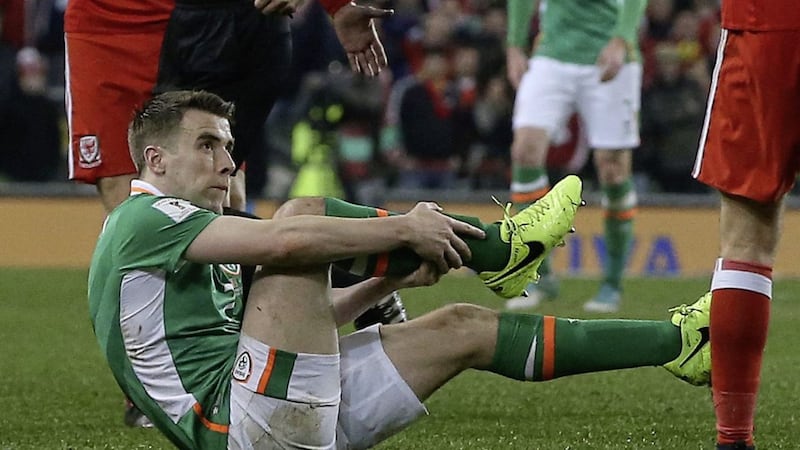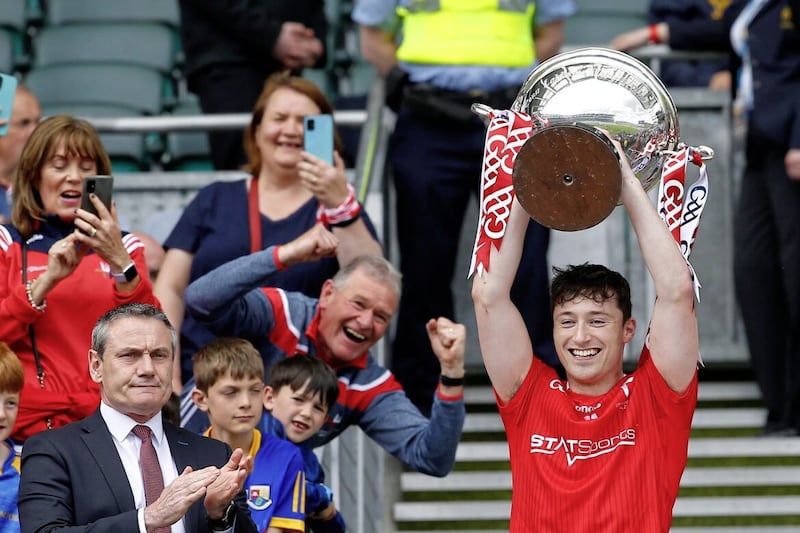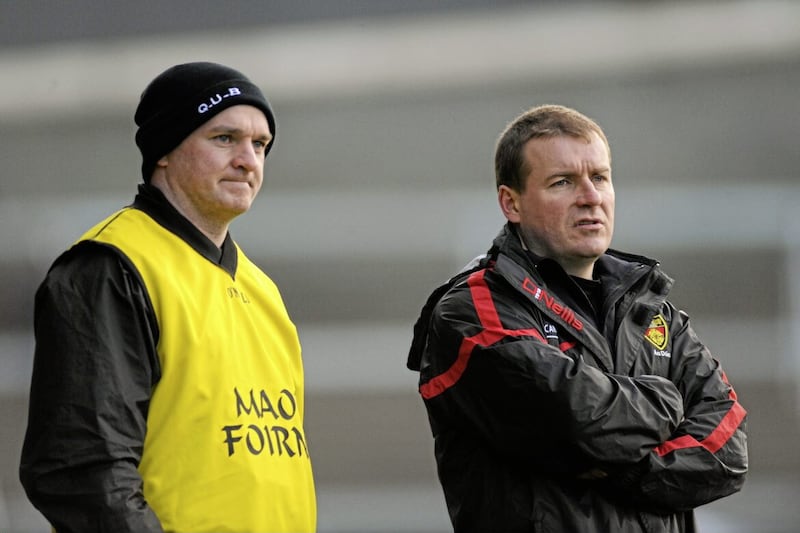I NEVER knew how easy you could break the leg of another player. I thought it would have required more force than it actually took.
But it didn’t. It took the minimum of force.
It happened in a reserve team game between Newington and Holywood FC some 13 or 14 years ago.
It was a mid-week fixture, the result of which would go some way to deciding the league title.
The match was played under beautiful evening sunshine on the lip of Belfast Lough.
I was playing central midfield.
My direct opponent was lighter, smaller and full of running.
Too much running.
I couldn’t get near him.
For a central midfield player, he never stayed in the one spot.
He would rush over to the left flank, then the right. He was perpetual motion.
These conditions didn’t suit me.
I was the kind of player who would flourish in a slower, more cerebral contest.
Not at 100 miles per hour.
He was setting a ridiculous pace.
After 15 minutes my lungs were on fire trying to track his runs.
I remember thinking that this guy should have been a middle distance runner.
Then it happened.
The most terrible thing I’ve ever experienced on a football pitch.
My opponent darted down the right flank with the ball.
As he tried to cross into our penalty box his shin hit the bottom of my right boot.
My blocking motion meant that my right leg was straight while all the momentum and vulnerability was with his right leg.
People say you hear the crack of the bone snapping.
I didn’t. I didn’t hear a thing.
As he lay screaming on the grass I genuinely believed he was exaggerating the extent of the pain.
I was about to gesture to him to get up and stop play-acting until I glanced at the disfigured shape of his lower right leg.
It was clear he'd suffered a horrific leg fracture.
I was probably in as much shock as him – without the pain of course – so it took a while to process what had actually happened.
I remember feeling tremendous guilt.
Was there even the slightest hint of intent?
Could I have tried to block the trajectory of the ball better rather than come into contact with my opponent’s leg?
How did it look from the sidelines?
The thing that put me at ease, however, was the reaction of the home supporters that had raced onto the field – not to berate me, but to aid the injured player?
The injured player’s father was there and he didn’t apportion any blame on me.
This came as a huge relief.
The prevailing emotions when standing and then crouching over a player with a broken leg is one of complete devastation and helplessness.
It seemed like an eternity for the ambulance to arrive, and the game was duly postponed until another day.
Since that night I’ve always been amazed that there aren’t more leg fractures in football. All it takes is the momentum to be with one player and for it not to be with another.
While it’s a modern-day frustration of fans that a good, hefty tackle is on the verge of extinction, it is entirely understandable to see why crudeness is scorned.
It used to be that if a player got the ball first and the man second that passed as a tough, manly challenge and well within the rules of the game.
Nowadays, if you get the man at any stage it’s a foul.
If anything, tackling has become a refined art where the ball becomes the sole focus and not the man.
That’s why Gareth Bale should also have been red-carded along with his Welsh team-mate Neil Taylor in Dublin last Friday night.
It's understandable for a player to protest his innocence, likewise for Chris Coleman to defend Taylor's character. What else can you expect?
But Bale and Taylor's respective tackles on John O'Shea and Seamus Coleman were reckless.
And if they're reckless there is generally intent.
O'Shea was lucky he didn't suffer the same terrible fate as Coleman.
What made matters worse last Friday night was that it happened to Coleman.
In this secular age, nobody has heroes any more. But Coleman is that one, rare exception.
In an era of fake modesty and media contrivance, the Donegal man is the real deal.
He’s the heart-warming antithesis to the self-absorbed, flashy, headphone-wearing, modern-day footballer.
In the minds of the public, Coleman grew in stature following his cautionary advice for young footballers trying to make their way in the game.
In an interview last November, he said: “It’s a big bad world out there in football and it’s easy for a young footballer to be sucked into a certain way of life.
“If I see a footballer with a Louis Vuitton wash-bag I wonder what that does to others. If you are the only young lad in the changing room without one then you feel that pressure that you need to go out and get one…
“That’s what I think is wrong with football. It’s completely wrong. Your job is to train well and play well on Saturday and do well week in, week out. That’s your job.
“They think they need to look good on their Instagram pictures. They think they have to follow the leader but they are just kids — boys.”
In this day and age, press officers are within earshot of every, choreographed interview, Seamus Coleman bucked the trend.
It was the day after the Republic of Ireland had secured qualification to Euro 2016.
Members of the media were invited to Castleknock Country Club – the team’s base in Dublin - for an arranged press briefing with Roy Keane.
In the lobby area, many of the Irish players milled around.
Some granted interviews and some politely declined.
Coleman, though, chatted away to the press – and continued to chat away even when the ubiquitous press officer was anxiously trying to call a halt to proceedings.
Coleman didn't need a press officer hanging over his shoulder. He was in charge.
Afterwards, the Killybegs man signed every requested autograph and posed for every 'selfie' for fans before rejoining his family in the lobby.
It's easy to see why the nation loves and admires Seamus Coleman.
He's a regular guy who spurns the material trappings of his narcissistic profession.
That's what made last Friday night so gut-wrenching because it was Coleman who suffered such a terrible injury.
He's the last of a dying breed, a paragon of good manners, modesty and who grasps the privilege of playing football for a living.
Virtues that are in short supply at the highest level.







